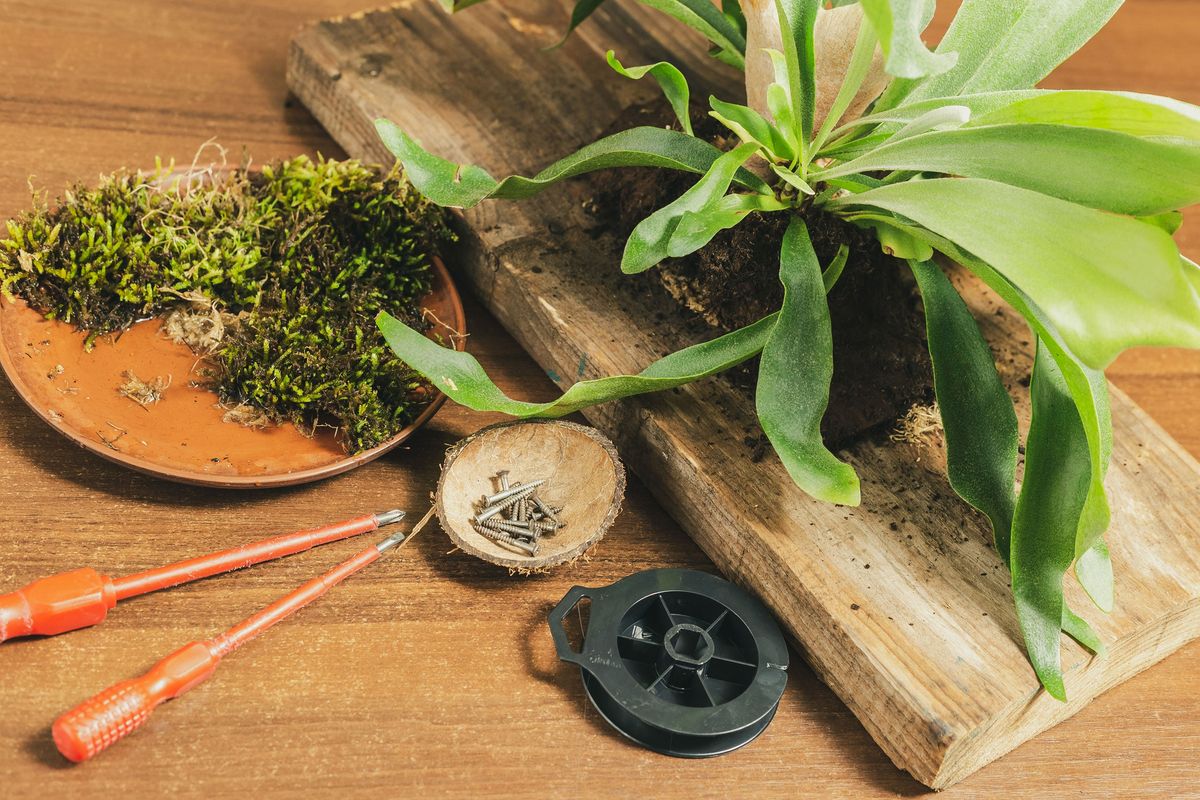With their antler-like fronds and prehistoric appearance staghorn ferns are fascinating plants. However, their unique growth habits and specific needs can make them challenging to care for. If your staghorn fern is struggling don’t give up hope! With the right techniques, you can nurse it back to health.
Signs Your Staghorn Fern is in Trouble
Watch for these common signs that your staghorn fern is distressed
- Wilting or drooping fronds
- Yellowing or browning fronds
- Spots/patches on shield fronds
- Evidence of pests like scale or mealybugs
- Unusual spots or areas of discoloration indicating disease
If you notice any of these issues, it’s time to make adjustments to get your staghorn fern thriving again
Step 1: Adjust Lighting Conditions
Staghorn ferns require bright, indirect light. Too much direct sun will scorch the fronds, while too little light prevents growth.
Move the fern to a spot with dappled or filtered sunlight. Sheer curtains or frosted window film diffuse light from windows nicely. Rotate the plant periodically to encourage even growth.
Step 2: Increase Humidity
Staghorn ferns prefer consistent humidity around 50-60%. Low humidity causes stressed plants and frond dieback.
Use a humidifier, pebble tray, or frequent misting to increase moisture levels. Group other tropicals nearby for a humid microclimate. Grow staghorn ferns in bathrooms for naturally high humidity.
Step 3: Repot If Needed
Repot staghorn ferns every 2-3 years in an orchid mix or peat moss. This prevents root rot and provides fresh nutrients.
Check roots during repotting. Trim off any black, mushy roots and treat remaining roots with fungicide. Repot in sterile potting mix.
Step 4: Water Thoroughly
Irregular watering causes many problems with staghorn ferns. Soak the root mass thoroughly, then allow excess moisture to drain away.
Aim to water 1-2 times per week. Assess soil moisture by weight – water when the pot feels light. Consistent moisture prevents root damage.
Step 5: Fertilize Regularly
Apply balanced liquid fertilizer every 2-4 weeks during the growing season. Soak the root mass, allow drainage, then water with diluted fertilizer.
Slow release fertilizer blended into the potting mix provides constant nutrients. Sprinkle granules per package instructions when repotting.
Step 6: Increase Air Circulation
Stagnant air encourages pests and diseases. Use fans to keep air moving around staghorn ferns.
Prune off affected fronds immediately to prevent spread. Remove severely infected plants to protect others.
Step 7: Inspect and Treat Pests
Mealybugs, aphids, and scale suck nutrients from fronds. Treat with horticultural oil or insecticidal soap.
Wipe pests away with a cotton ball soaked in alcohol. Severe infestations may require systemic insecticides. Be vigilant about monitoring for pests.
Step 8: Provide Support and Stability
Mount staghorn ferns on boards or in wire baskets to support the weight of the fronds. This prevents breakage and encourages healthy growth.
Check mounts periodically to ensure they remain secure. Add additional wire supports as the fern matures and increases in size.
Step 9: Allow Time to Recover
Don’t expect an overnight revival – give your staghorn fern a few weeks or months to rebound based on the severity of the issues. Some fronds may be beyond saving.
With attentive care and patience, your staghorn fern will produce new growth. The new fronds signal that your efforts are working!
With a few adjustments and focused care, you can nurse even severely stressed staghorn ferns back to health. Be diligent and patient, and you’ll be rewarded with a uniquely beautiful houseplant.
Staghorn Fern SOS! Rethinking My Staghorn Fern Set-Up | Staghorn Fern Crucial Care Tips
FAQ
What does a dying staghorn fern look like?
Should I remove dead leaves from staghorn fern?
How to revive a dying fern?
How do you make a staghorn fern happy?
- A Complete Guide to Caring for Yuki Cherry Blossom Shrub - January 23, 2025
- Identifying Red Hot Poker Seeds: What to Look For When Harvesting Torch Lily Pods - January 23, 2025
- A Complete Guide to Harvesting Evening Primrose Seeds - January 23, 2025

